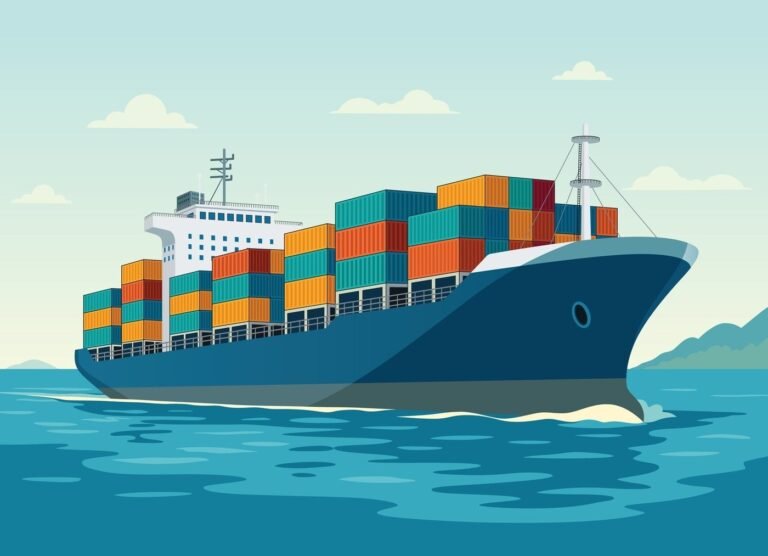The global shipping industry is now on the frontlines of a new kind of conflict – one defined not by declared wars, but by economic coercion, shadow fleets, and contested logistics. As tariff regimes expand and national security policies increasingly target commercial vessels, maritime operators are being forced to navigate a risk environment shaped more by geopolitics than weather.
Trade disruptions are no longer accidental byproducts of diplomacy – they are deliberate policy levers. Tariff escalation between the US and China, sanctions on Russian oil, and Houthi attacks in the Red Sea are not isolated threats. They signal a new normal in which governments treat shipping as a tactical asset.
From China’s military-civil fusion shipbuilding policies to LOGINK, its state-run maritime surveillance network, the very infrastructure of global trade is becoming entangled in national agendas.
The complexity of threats
Shadow fleets, illicit networks, and military-grade commercial vessels are no longer theoretical risks. These realities challenge regulatory compliance, insurance viability, and operational safety. Shadow fleets operated by sanctioned states rely on tactics like false flagging, frequent ownership changes, and manipulations of the Automatic Identification System (AIS).
By turning off transponders, spoofing locations, or falsifying data, these vessels can effectively vanish from traditional tracking systems. This disappearance makes ships harder for authorities to trace and easier for adversaries to exploit for sanctions evasions or covert logistics. China’s commercial fleets increasingly mirror military standards, raising concerns about dual-use capabilities and strategic readiness under the guise of trade.
New threats emerge as sea lanes evolve. Melting polar ice is opening Arctic routes dominated by Russian ships, where traditional enforcement is limited. At the same time, nations like China are floating nuclear-powered cargo vessels, promising cleaner energy but signaling strategic naval capability.
The need for a new risk framework
Maritime operators must now consider not just where a ship is going, but who built it, what surveillance data it shares, and how foreign governments may view its role in future conflicts.
For logistics and shipping leaders, the implications are immediate. This is no longer about simply avoiding sanctioned cargo – it’s about forecasting how governments will act and how quickly those actions can alter operations.
Vessels expected to be available may be commandeered, sanctioned, or rerouted without warning. Insurance may evaporate. Contracts may become liabilities.
To navigate this terrain, organizations must adopt a new kind of visibility: one that models the cascading effects of tariffs, military requisition policies, and enforcement shifts. This is where Open-Source Intelligence (OSINT) becomes indispensable.
OSINT as an industry compass
OSINT draws from publicly available data – including satellite imagery, port registries, and social media – to provide real-time context on geopolitical risks.
It can be used to track vessel flagging and ownership changes, monitor transhipment hubs, and surface anomalies in crew rosters and employment histories – indicators often tied to sanctions evasion or illicit activity.
AIS anomaly detection reveals when ships “go dark.” Satellite imagery exposes vessels operating without transponders. Tracking shifts in vessels’ flagging or changes in crew manifests can signal risk before it hits operations.
For insurers and regulators, OSINT supports risk modeling by revealing trends like flag-of-convenience usage, secondary insurance underwriting in high-risk zones, and affiliations with known bad actors. OSINT doesn’t just enhance compliance – it enables foresight. It empowers industry players to anticipate when and where governments will act.
Tariff announcements, sanction designations, and strategic military exercises are not isolated data points – they’re early indicators of disruption.
The business imperative for OSINT
The age of separating business risk from political risk is over. Global shipping is now a domain of contested logistics where the rules can change as fast as a sanctions update or a new enforcement directive.
Companies that integrate OSINT into their operational planning gain the ability to model and mitigate threats proactively. Those that don’t may find themselves caught in the crossfire – financially, operationally, and reputationally.
These realities drove the development of our vendor threat mitigation and maritime intelligence solutions, because the industry needs access to the same kind of threat modeling governments use to act.
In an era of mounting complexity, the role of OSINT in securing global shipping networks cannot be overstated. To the shipping industry: the seas are rough – OSINT solutions can help you steer through.

